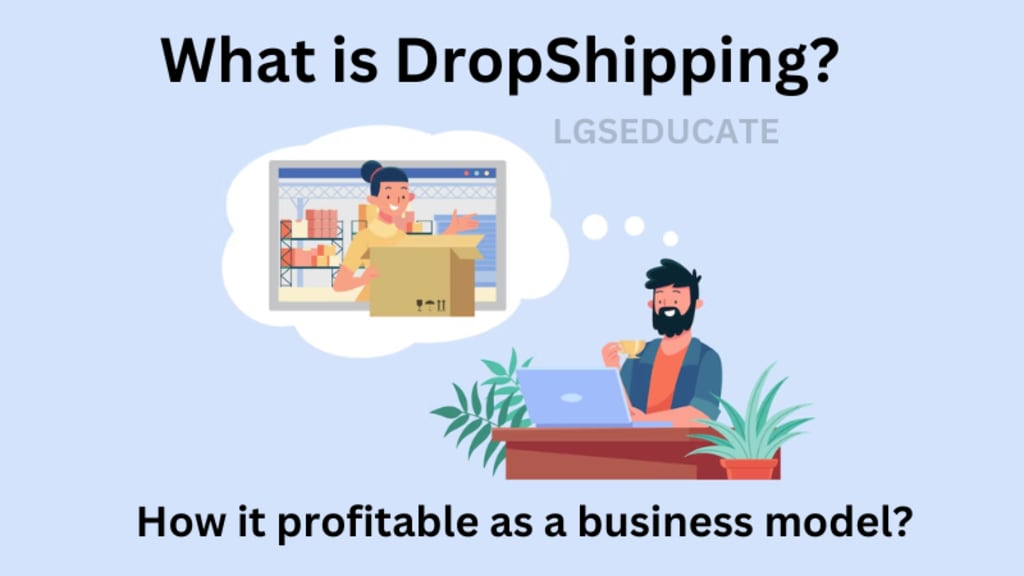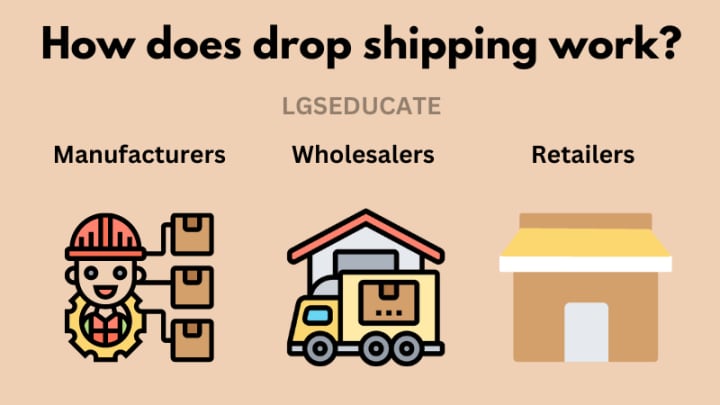What is dropshipping?
Drop shipping is a retail fulfilment method where a store doesn’t keep the products it sells in stock. Instead, it purchases the item from a third party and has it shipped directly to the customer.

What is a dropshipping?
Drop shipping is a retail fulfillment method in which a business doesn’t keep the products it sells in stock. When a drop shipping retailer sells a product, it purchases the item directly from a third party (a manufacturer, wholesaler, or another retailer) that ships the product directly to a customer.
So if your business adopts drop shipping, you act as a storefront that customers visit and order products from. Once they place an order, you charge the consumer, and the drop shipper charges you. You never handle the actual products.
What is a dropshipping business model?
In a dropshipping business model, you promote products and provide an online storefront. When a customer places an order, you send the order to the dropshipper and inform customers the products are on the way.
The rest of the physical fulfillment process is out of your hands. In some dropshipping agreements, you may also handle customer service, while the dropshipping service manages the physical goods and fulfillment.
How does dropshipping work?

Drop shipping is a supply chain management method. (If you recently opened a retail business or an online store, a supply chain is a network of suppliers, materials, manufacturers, and retailers involved in the creation and distribution of a product, from production to customer delivery.)
These are the parties involved in drop shipping:
Manufacturers create the products. They usually don’t sell to the public; they sell in bulk to wholesalers and retailers instead.
Wholesalers buy products from manufacturers, and then mark them up before selling them to retailers. Wholesalers usually stock products from a variety of manufacturers.
Retailers sell products directly to the public, at a markup.
And here’s how it works:
The customer places an order with your business, the retailer.
You alert the drop shipping partner — either the manufacturer or the wholesaler — who packages and ships the product to the customer.
The drop shipping partner charges you, the retailer, for the service, and you charge the customer.
Generally, the shorter the supply chain, the greater your profits will be because there are fewer parties taking a cut. A short supply chain is one where you deal directly with the manufacturer.
Potential pros and cons of dropshipping?
In ecommerce, as in life, there are advantages and disadvantages to any fulfillment approach. Whether the gains are worth the pain largely depends on your goals and business situation. Here are potential pros and cons to consider when weighing whether dropshipping is right for your business.
Possible benefits of dropshipping include:
Overhead costs: Since you don’t store or ship the products, dropshipping has the potential to lower overhead costs, such as maintaining a storage facility or sending products to customers.
Starting costs: Entrepreneurs looking to start a business with minimal investment may turn to dropshipping as they don’t need to invest in facilities or resources to process orders.
Reduced risk: Since you don’t have to pay for inventory, there’s less risk of losing money due to lost merchandise or over-ordering products.
Multi-channel selling: You can use dropshipping for your business while selling on your own domain, through a store like Amazon, or social media channels —or all of the above.
Operating location: Dropshipping allows you to fulfill orders regardless of your operating location, opening up a possibility to work from anywhere.
Scalability: Leveraging suppliers can make it feasible to accept more orders without increasing the inventory you store, package, and ship.
Wide variety of products: Depending on your agreement, there may be no need to pre-purchase inventory, so you can sell a broad range of items and increase your earning potential.
Flexibility: Not sure what goods to sell? Dropshipping allows you to test different goods to see what sells best, without worrying about losing your investment.
Potential limitations for dropshipping include:
Competition: Given the low cost and investment to get started, dropshipping is a highly competitive field.
Product quality: Dropshipping reduces your involvement in the order fulfillment process, curtailing your ability to monitor and guarantee product quality.
Branding: Because the products you sell may not be unique or distinguishable from similar offerings by other sellers, you could have trouble differentiating your offering.
Profit margins: Little to no product differentiators means your business may end up competing more aggressively on price. Selling at low prices can eat up your profit margin.
Fulfillment timeline: When a dropshipping service handles the fulfillment process, you do not have control over order selection, packaging, and shipment.
Inventory management: Up-to-the-minute updates on what is available in stock may not be possible. If a customer places an order only to find the product is out of stock, this poor experience can discourage future orders and damage your brand.
Range of offers: Because you don’t handle order fulfillment, you may be limited in the special offers and promotions you can run, such as bundling or free shipping.
Supplier errors: Low-quality dropshippers may make mistakes when fulfilling customer orders. This could lead to botched orders, low-end packing, and missing items.
Complex customer service: With dropshipping, you’re still responsible for your reputation and keeping customers happy. If things go wrong with the fulfillment process, managing customer support might be up to you.
For some businesses, dropshipping limitations do not outweigh the potential benefits. Luckily, if you want to lower your inventory management and order fulfillment costs, a service like Fulfillment by Amazon may be an option. For some sellers, FBA provides a happy medium, offering many of the benefits of dropshipping without the downsides.
Tips for a dropshipping business

There are a few best practices to implement to assure success for your drop shipping business.
Make online shopping a pleasure: From ordering to delivery, you want to make the experience as seamless as possible. That starts with a user-friendly e-commerce experience. You want to invest in building an elegant site that is easy to use (on all devices) and simple to understand.
Be particular about products: While drop shipping allows you to sell a wide variety of products, that doesn’t mean you should sell everything. Do market research and analyze trends to determine what you should be selling in your store. Think carefully about what is marketable, what is easy to ship, and what is hard for people to find locally.
Focus on quality: Even if you thoroughly vet a supplier, you should remain vigilant about the service once you’re working together. For example, if there are several incidents of damaged products, lost packages, or late deliveries, cut ties with the supplier or risk losing the confidence of your customers.
Build a trusted business: Your reputation is everything, so not only do you need to follow through on your promises with reliable drop shipping partners and a great website, you should also work to boost your online credibility to ensure customer trust. This will guarantee longterm success. From building a robust social media presence to creating successful email marketing campaigns, forming strong relationships with your customers will help ensure the success of your drop-shipping business.
The Final Word
Dropshipping can be a highly useful tactic when applied correctly.
But the reasons it doesn’t work for new companies become less relevant the bigger a company gets.
For example, an established company has a healthy flow of traffic and doesn’t need to worry about establishing their brand.
That’s why dropshipping makes a great complement for most experienced ecommerce companies. Just don’t rely on it for the heavy lifting.
About the Creator
LGS Educate
Blog Writer | Digital Creator | Growth Strategist | | Presenting top AI resources, updates & insights to empower you.| For More Visit: http://lgseducate.com appears to be a Digital Knowledge Hub that provides Information and Resources.
Enjoyed the story? Support the Creator.
Subscribe for free to receive all their stories in your feed. You could also pledge your support or give them a one-off tip, letting them know you appreciate their work.






Comments
There are no comments for this story
Be the first to respond and start the conversation.